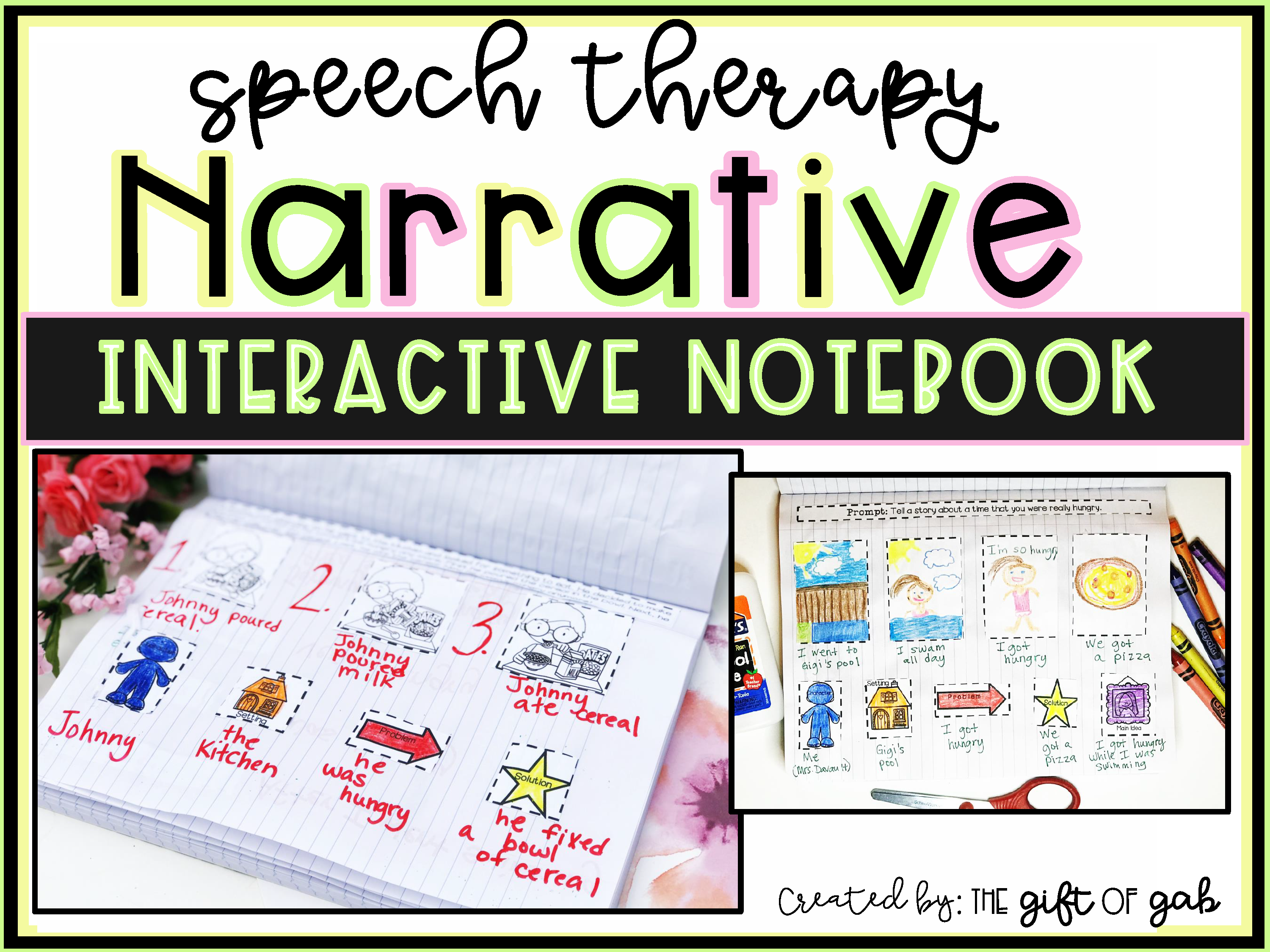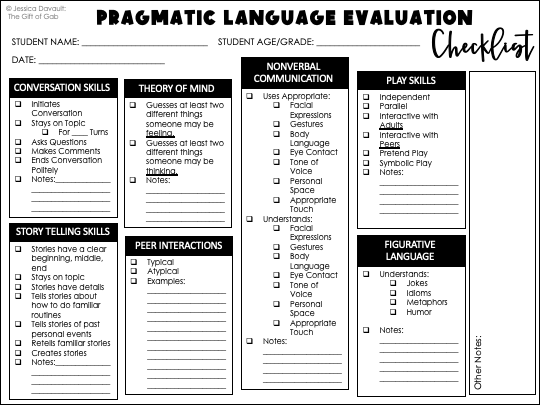
We need to talk and I want to be 100% honest with you. I am not an expert Speech-Language Pathologist. There are many, many things I don’t know.
Phew! *Wipes brow* Serious moment done! Now that you know that I will NEVER pretend to be anything I am not; we can talk about narratives and their role in speech therapy.
The reason I need you to know I am not an expert SLP is because I used to know nothing about teaching narratives. I didn’t even know I should be working on them! I discovered their importance while reading some reviews on The Informed SLP. (Seriously-click that link to check it out, it might just change your speechie life.)
Why Should I be Working on Oral Narratives in Speech Therapy?
I am so glad you asked! As it turns out, there are quite a few reasons you should be working on narratives, but for this post I am going to focus on the three that stood out to me.
- The first reason is that when you work on narrative skills, there is evidence that suggests that other language skills may improve simultaneously. My understanding is that the trick here is not to get caught up in perfecting the “microstructure” of stories, but instead to focus on improving students understanding of the “macrostructure”. (In case you need a little refresher, when I say microstructure, I am talking about things like grammar, vocabulary, syntax, etc. When I say macrostructure, I am referring to the bigger story elements such as the character, setting, problem, and solution.)
- Do you know what else gets better when you work on oral narrative skills? WRITING SKILLS! We know that we need to be working on writing skills in therapy (after all, writing is written language). But typically, we only have about 30 minutes at a time to get our speech business done and, oh my word, writing takes FOREVER. It almost feels like a waste of a session when you spend the entire 30 minutes helping each of the four students in your mixed group write two, maybe three sentences. I’m just saying, if the people who know more about these things than me say that when you work on oral narratives it also helps with writing skills, I think we should be giving it a try. I am all about efficiency, and what is more efficient than working on two things at once?
- According to ASHA, storytelling deficits are indicative of pragmatic language disorders. (Click the link here if you want to read what ASHA has to say). So working on oral narratives not only helps students with receptive and expressive and writing deficits, but it ALSO helps with social language disorders?! That is like working on four things at once! If working on two things is efficient, what does that make working on four things?
How Do Oral Narrative Skills Develop?
As it turns out, narrative skills actually begin to develop when children are very young. (As I began researching this topic, I read this article that showed me that my two-year-old son is already learning narrative skills!) When we are talking about how narrative skills develop, it gets pretty complex really quickly. I am not even going to attempt to break down the complexity of these development skills, but I am going to tell you the basic hierarchy I developed that I think makes a good starting point for your everyday speech therapist.
- Retelling Stories About Familiar Routines: In the first stage, children are talking about familiar routines. Since they have done these things before, they have an easier time sequencing and organizing the story.
- Retelling Past Personal Experiences: In the second stage students begin to tell a story that actually happened to them. It requires students to pull an event from their long-term memory and sequencing skills might deteriorate slightly.
- Retelling a Fictional Story: The next step is having your students retell a fictional story. This is best done with stories that have easy to identify characters, settings, problems, and solutions. In this stage, students must now rely more heavily on sequencing skills and short-term memory skills.
- Creating a Fictional Story: Students begin creating their own fictional stories in the final stage. This is the most complex stage because it requires students to have an understanding of story elements, sequencing skills, and they must also rely heavily on both their long term and short-term memory to create a story that makes sense.
How Do I Work on Oral Narratives in Speech Therapy?
Now for the moment you have all been waiting for! (Cue the drum roll in your head) It is time to talk about how we can target oral narrative skills in speech therapy!
- Target sequencing skills. Many students who struggle with storytelling skills have a hard time organizing a story into a logical structure, so we need to be making sure our students are proficient in this skill.
- Teach the main story elements (macro elements). Again, you can make this much more complicated, but for your average SLP, I personally think targeting the basic story elements (character, setting, problem, and solution) are a good starting point when you are trying to target macro elements. I would suggest helping your students get really proficient at identifying these and then moving onto more complicated story elements, if you think it is necessary.
- Help your students identify the main idea. Often times when students struggle with narratives, they have a hard time getting to the point of the story. They get wrapped up in details and never really tell us what they wanted to say in the first place. Helping them learn to weed out the main idea from the details will help them tell more stream lined stories.
- Help your students make personal connections to the story. This is the basic stage of making inferences. When students feel connected to the characters in the story, it makes it easier for them to make emotional inferences. This is especially important to work on with students who have Autism or pragmatic language disorders.
- Practice making inferences about the emotional states of the characters. This is the more advanced stage of making inferences. It is known that students with Autism struggle with understanding the emotional states of characters in stories, so the more you can practice this, the better. A great way to introduce this skills is by showing a picture that shows an emotion and helping your students make a story about the picture.
- Pre-teach Tier 2 Vocabulary: If students are retelling a story, make sure they understand the important Tier 2 Vocabulary.
- Practice, practice, practice. Practice retelling stories until they are securely stored in long term memory. Each time a student retells a story, it should get better. The story should become more fluid and other language elements such as sequencing, grammar, and vocabulary should improve.
Speech Therapy Oral Narrative Interactive Notebook

Now that I have told you everything I think you need to know to start tackling those oral narrative speech therapy goals, I want to tell you about this interactive notebook I created to help me work on narrative skills with my caseload. It will help you target each of those 7 areas that I listed above in one beautifully curated speech therapy session. Here is how it works.
- Students will practice their narrative skills by creating an interactive notebook.
- Print off the activity pages and assemble them using the instructions I have given you in the download.
- As students create their notebook, they will be practicing using sequencing skills, identifying story elements, finding the main idea, making inferences, and practicing some Tier 2 Vocabulary.
- By creating a notebook, students have all the resources they need to go back and practice retelling the stories they have already created in the notebook. This repetition is paramount for improvement in storytelling skills.
- The activities in the notebook build in complexity using the hierarchy I listed above. You can practice each level as much as your students need until they are ready to move to the next section.
If you are interested in learning more about this notebook, click the picture below and it will take you to my Teachers Pay Teachers Store!

If you’re interested in upping your pragmatic language therapy/evaluation game then you have come to the right place. Let me share my tips and tricks with you so that you can approach this tricky area with confidence. Click here and we can start learning together–I even want to give you a free pragmatic language evaluation checklist so you can sample my work. If my style isn’t your cup of tea, you can unsubscribe at anytime 🙂

Articles About Narratives and Speech Therapy
Click the links below if you are interested in reading more about narratives and speech therapy!
Adolf, S. M., McLeod, A. N., & Leftwich, B. (2014, April 14). Structured narrative retell instruction for young children from low socioeconomic backgrounds: A preliminary study of feasibility. Retrieved from https://www.frontiersin.org/articles/10.3389/fpsyg.2014.00391/full#h9
Gillam, S. L., Olszewski, A., Squires, K., Wolfe, K., Slocum, T., & Gillam, R. B. (2018, April 5). Improving Narrative Production in Children With Language Disorders: An Early-Stage Efficacy Study of a Narrative Intervention Program. Retrieved from https://pubs.asha.org/doi/10.1044/2017_LSHSS-17-0047
Spencer, T. D., & Petersen, D. B. (2018, July). Bridging Oral and Written Language: An Oral Narrative Language Intervention Study With Writing Outcomes. Retrieved from https://pubs.asha.org/doi/10.1044/2018_LSHSS-17-0030
Westerveld, M. F., & Roberts, J. M. (2017, October). The Oral Narrative Comprehension and Production Abilities of Verbal Preschoolers on the Autism Spectrum. Retrieved from https://pubs.asha.org/doi/10.1044/2017_LSHSS-17-0003
How do you like to work on narratives?
Leave a your favorite narrative strategies in the comments so we can all get some fresh ideas!



